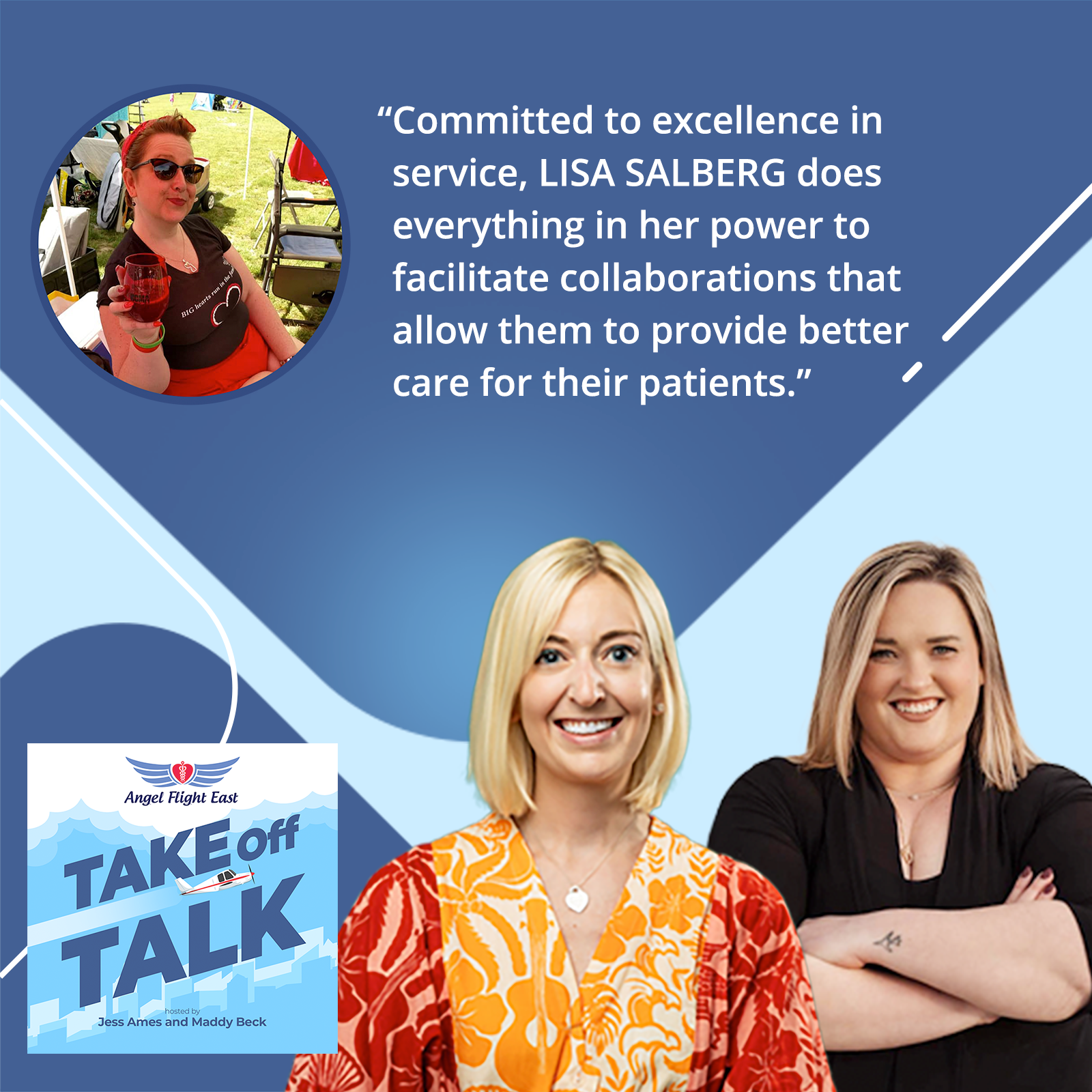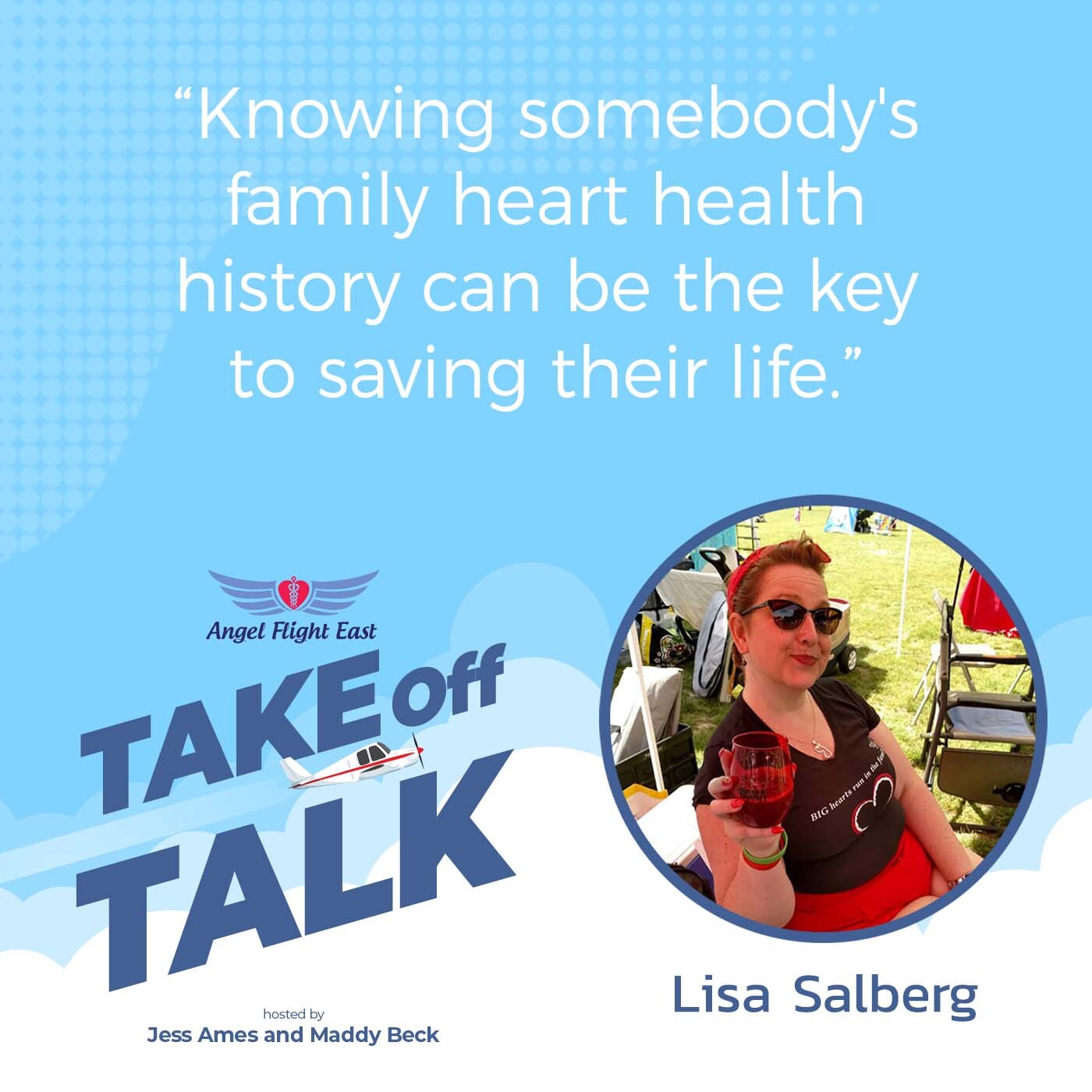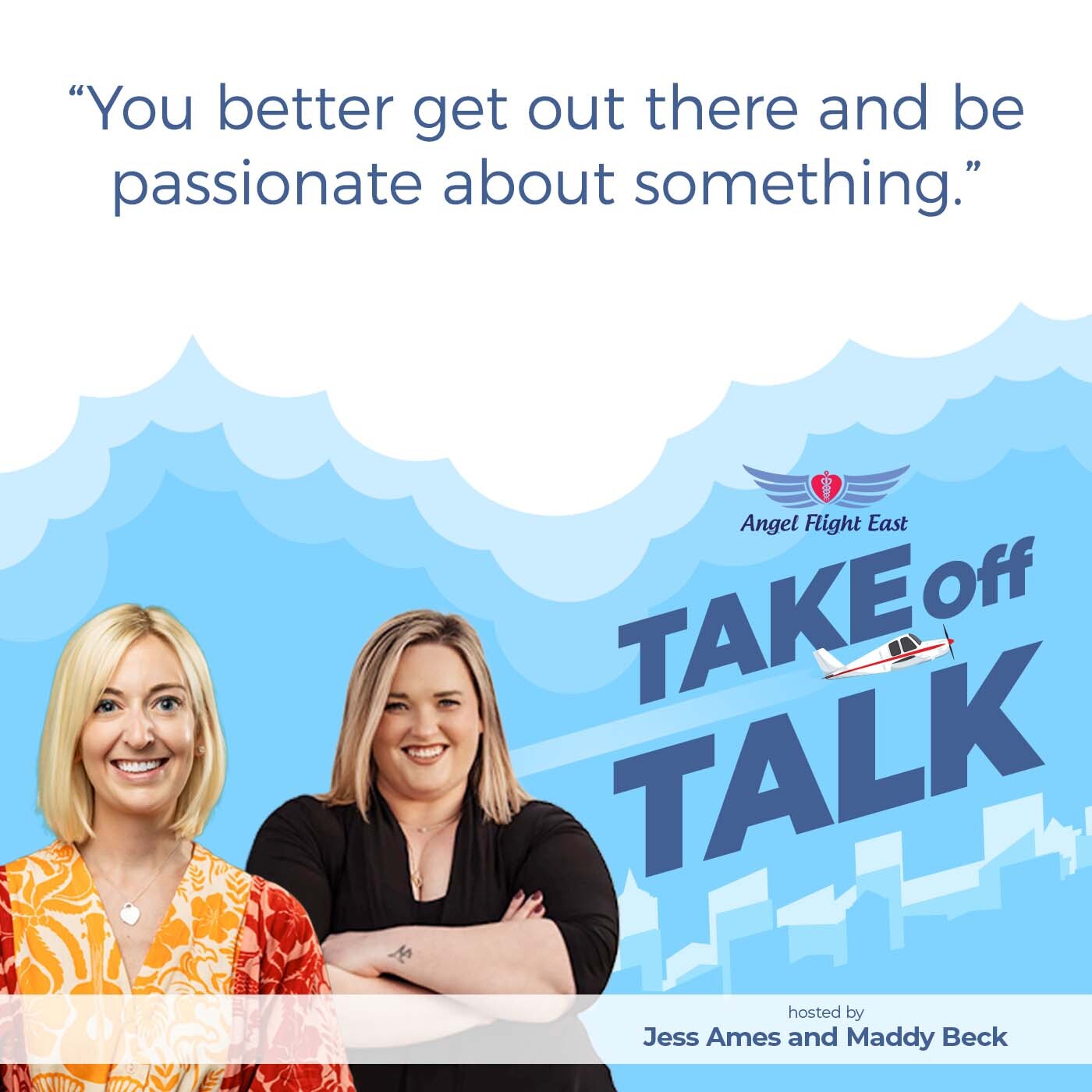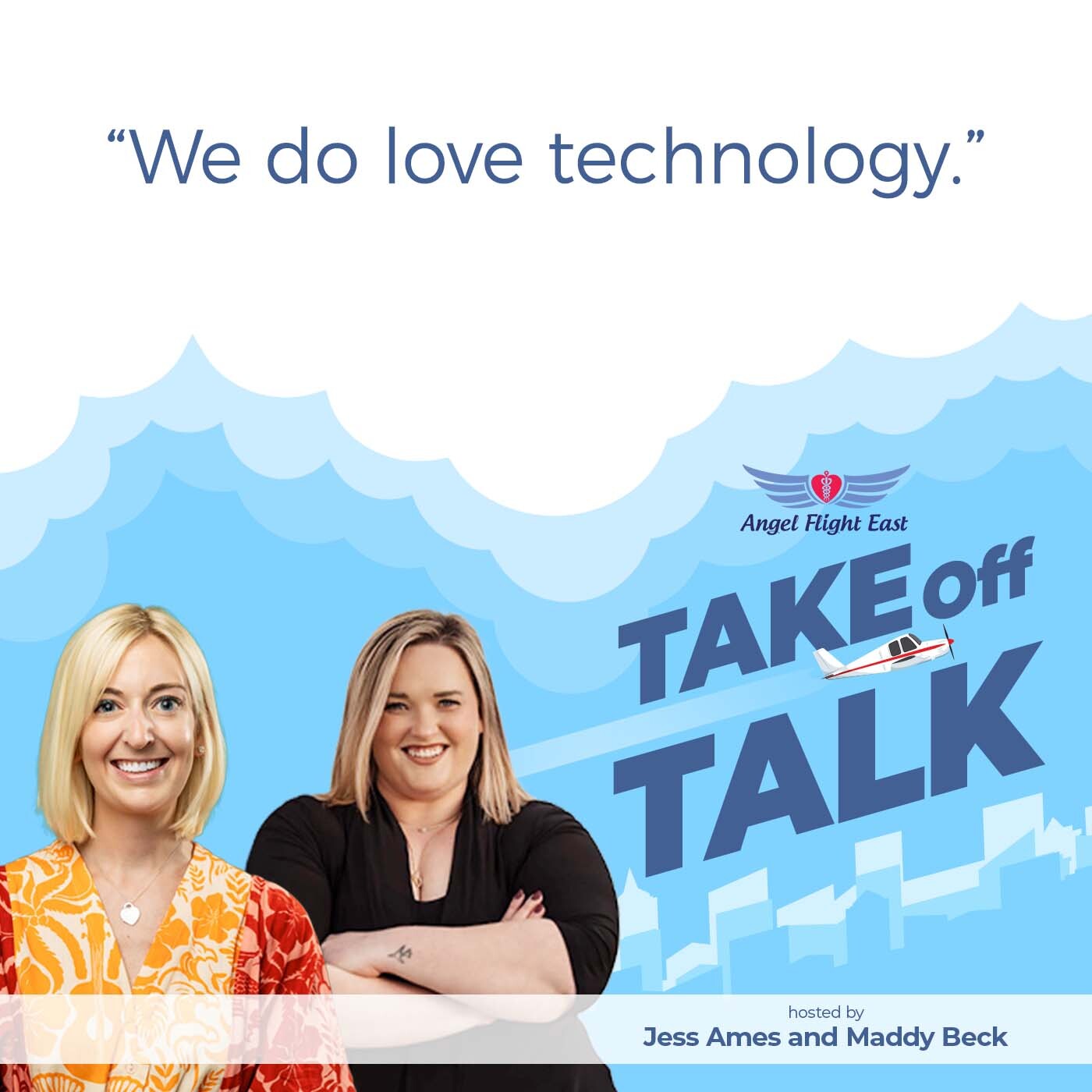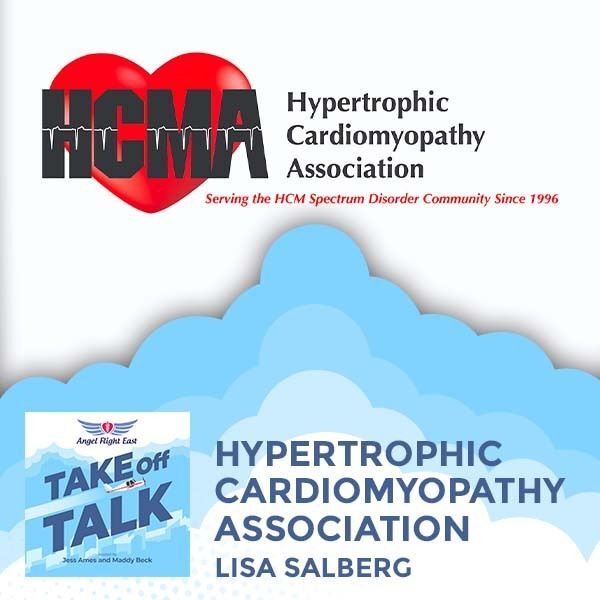
The Hypertrophic Cardiomyopathy Association (HCMA) is a leading organization dedicated to improving the lives of people with hypertrophic cardiomyopathy (HCM). The organization has served the HCM Spectrum Disorder Community since 1996. In this episode, Lisa Salberg, the Founder and CEO of HCMA, talks about the steps she takes to reach patients with misdiagnosis. She also shares how HCMA partnered with Angel Flight East. Tune in for more!
---
Watch the episode here
Listen to the podcast here
Welcome back to another episode of the show. You’re here with me, Maddy.
Also, me, Jess.
We have a friend from a partner organization, Lisa with HCMA.
Hi, Lisa.
Thanks for having me. I’m looking forward to the conversation.
Do you want to give our audience a background of what, who, and where HCMA is and give it a whole who, what, when, where, and how?
Absolutely. HCM stands for Hypertrophic CardioMyopathy. We are the Hypertrophic Cardiomyopathy Association. We are an organization committed to patients with a genetic heart muscle disorder. HCM can be a lot of different disorders under one spectrum. There are a number of different genetic mutations that cause HCM. We serve all of those big-hearted community members.
Most of your audience may have heard of HCM as the leading cause of sudden death in young athletes. When you’ve seen the headline where a young person has died suddenly and unexpectedly and they come back and say, “He had an undiagnosed heart problem,” 40% of those turn out to be HCM. That’s not really who’s affected the most commonly.
We are the most common genetic disorder of the heart that is known and understood. That means our patients are struggling a lot of time with delayed diagnosis, misdiagnosis, and, frankly, being a bit misunderstood because we look normal. We don’t look like we have a problem. We’re not limping. We don’t have a cast. There’s nothing visual about a heart problem.
I myself was diagnosed at twelve. I have a very long family history of HCM. We are here to provide support, education, and advocacy for these people worldwide. We predominantly have the biggest footprint in the United States, but we also work in places like Sweden, Brazil, and Australia. We have patients all over the world. That’s what we do.
We also have a program called our HCMA Recognized Centers of Excellence program, which is fantastic. We have 50 partner organizations around the country. The tricky part is people with HCM don’t always live right next door to a center. Getting them to those centers is highly challenging because it becomes very costly and time-consuming.
We want to make sure patients get access to that high-level care as quickly as possible and as easily as possible. That’s why we were really excited to start a partnership with Angel Flight and be able to provide services through something we call the Lori Fund. That provides travel stipends for families needing to go to high-level centers of excellence care. That’s what we do in a nutshell.
Being such a common but not-so-common condition, how many different centers are there that you would consider a center of excellence for HCM?
There are about 50 in our network. We have another twenty that we’re working on throughout the country. We have international programs that are building out as well. The tricky part about HCM is your community cardiologist might be able to spot it in some cardiac imaging like an echocardiogram, but it’s not one disease.
There are multiple genetic mutations that cause different presentations of HCM. We’re not really easy to figure out. Some people are at very high risk of something called cardiac arrest, which I talked about earlier. Other people have problems with the blood leaving the ventricle. It’s called obstructive HCM. You may have seen some commercials because there’s a new drug on the market for those with obstructive HCM. That word might sound familiar to some readers.
There are also people who have atrial fibrillation that’s related to their HCM. Other people may need open heart surgery. Other people may need other procedures or other drugs that are not commonly used in the general cardiac office. Not every cardiologist can manage every aspect of HCM, which is why we have high-volume multidisciplinary programs.
"HCMA has high-volume, multi-disciplinary programs because not every cardiologist can manage every aspect of HCM."
The surgeon, the electrophysiologist or the electricians of the heart, the imaging people, and the genetics people all work in one practice, but they don’t typically see the same patients on the same day. When you go to a center of excellence, you can have one-stop shopping. You get the electrical guy in there. You get the plumbing guy in there. You get the genetics person in there. They can look at you and your family and go, “Now we understand what we need to do for you.” What you do for me might be different than what you do for my daughter versus my niece versus my nephew, but you have certain traits that run throughout a family that indicate the risk of things like sudden cardiac arrest or heart failure. About 5% of our population goes off to transplantation.
Misdiagnosis
That’s interesting. We learned about HCM. Somebody in our world of Angel Flight has HCM and was traveling to Florida to see his local doctor. I know you said it’s such a misdiagnosis and some people find out much later in life that they may have HCM. How do you outreach to patients and those healthcare facilities that are centers of excellence saying you are a resource for their families who may be misdiagnosed or wondering what they do next once they find out their actual diagnosis?
That’s a complicated question. I’ll give you as succinct an answer as I possibly can. If you’ve been diagnosed, the local cardiologist typically can get the name of the disease right and understand your anatomy to a basic level, but some of the imaging that we need to do is very specialized. It's a cardiac MRI. We’re looking for the amount of scar in your heart. We’re looking at the exact anatomic presentation of your HCM. You could have a thickness in the middle of the heart called the septum, the wall that separates the right and left. You could have it at the base of the heart, which is called apical HCM. You could have non-obstructed or you could have obstructed.
Every patient with HCM gets some different acronym thrown on them, but it’s all one disease. When your local doc sees HCM in the big umbrella name, the center of excellence starts to parse you down to where your hypertrophy is, where your risk is, and what is happening inside of your heart. Sometimes, they have problems with things called papillary muscles. Did you even know you had them? Probably not.
There are these two little muscles inside of your heart that help your mitral valve open and close. For some people with HCM, they’re wonky. They’re attached. They’re moved the wrong way. They’re pulling the valve in the wrong direction. Only a specialist can see these very tiny nuanced differences. You go from a local, go to a center of excellence, and then work in partnership with your local cardiologist and your center of excellence.
I happen to know the person at Angel Flight who has HCM. That’s how we came to know you. I knew them and they started working for you guys. They’re like, “We could put this together. I’m like, “Let’s do that. Let’s find out where all of these other patients are hiding throughout the country and get them to high-level care.”
It’s really important that these particular families get the right care at the right time before things go badly. Young people die. They have cardiac arrest or they go into heart failure. We can’t waste time with misdiagnosis or misunderstanding. We have to get people to the highest level of care possible as quickly as possible.
Typically, once you get an assessment, then it’s checking in with your center maybe every 1 to 2 years unless your symptoms change or you are moving towards transplant or something on that level. Most times, it can be checking in with these high-level specialists once or twice a year or once or twice every other year, I mean.
That’s super interesting. Is there ongoing imaging that has to happen for an HCM patient to understand the progress of the condition?
Yeah. That’s why we do imaging about every 1 to 2 years in HCM to see if the heart is changing. There’s all different anatomic language that I can use that would probably put most of your audience to sleep. We want to see if there is more outflow tract obstruction. Is the blood having a harder time leaving the heart? Is the atria getting too dilated? That puts you at risk for atrial fibrillation, which is a leading cause of stroke. You have to keep an eye on what your anatomy is doing and how you’re feeling.
People with HCM have a really nasty habit of not understanding what their own symptoms are and how limiting they become. I was diagnosed when I was twelve years old. I would have chest pain while I was roller skating with my friends. Everybody thought it was strange that I would have cardiac symptoms at 12 or 13. Over time, my disease progressed. I ended up having a stroke at the age of 21. I’m partially blind in one eye because of that.
A few years later, I had my first pacemaker put in, and then I had a defibrillator put in a couple of years after that. Seven years and 30 days after or thereabouts, I had a heart transplant. I took my heart out and got a new one. My donor’s name is Brandy. That’s all I know about her and her family. I’m here because of the availability of high-level care, working with a center of excellence, and getting myself all the way up to and through transplant. I got right back to work from my ICU bed because I’m a workaholic. It made me happy, so I did it. I’m still here to serve this amazing community of big-hearted folks.
That’s incredible. How long has HCMA been in existence?
Hypertrophic Cardiomyopathy Association
I had this crazy idea back in 1995 right after my sister died. My sister was 36 years old. She was mismanaged. She had a cardiac arrest, died, and went on to become an organ donor herself. I started to think, “There’s this new thing. It’s called the internet.” In 1995, it wasn’t something that people thought about. It wasn’t what it is now. I had to teach people what WWW meant. I would go to cardiology conferences like, “We have a website. Here is where you can get information and send your patients to.”
It started off as me starting a website and it grew. We are a staff of nine. We have over 550 volunteers signed up to do different projects with us. We run discussion groups. We have webinars. We had our HCM Awareness Day where we featured what’s going on in the community. We share patients’ stories. We’re here to support them. We have a patient registry and a wonderful board of directors, volunteers, and committees. There are lots of ways for people to get involved, serve, and be here to support each other through a very complicated disease process that affects multiple generations in the family.
You were like the pre-Boomer like, “This is the internet. I feel like that’s how I am now.” I talked to my mom and I was like, “This is where we Google this. This is what you click right here.”
I did not plan on becoming a nonprofit founder when I was planning my career. I started out in computer programming. I’m going to date myself here. I’m a little bit older than both of you. I guarantee it. I was the first high school class to have a PC course. I learned all kinds of different programming, but I was really interested in basic programming and PC programming. I did Fortran, Cobol, Pascal, RPG, and all these old languages that you don’t use anymore, but I was fascinated by a PC when I was 13 or 14 years old and they were coming out. This is the early ‘80s. I left school and went into computer programming.
I was with an insurance company and it was boring. I wanted to go work someplace else, so I went to a placement agency. They were like, “You do not belong locked in a computer room doing code. You’re a people person.” I’m like, “I know that.” They were like, “You need to work in recruitment of other people, IT professionals,” so I went into recruiting. From recruiting, I went into HR. From HR, I went into health plan administration.
I was on that side of healthcare when my own family’s health was falling apart. I simultaneously started the organization. I was working in human resource management and decided that while I was raising my daughter who was under a year old and my niece and nephew were living between my parents and us, this is when I was going to start a nonprofit organization. I was 27 years old. Why not?
I’m not 27 anymore and the internet has evolved. We are talking over the Internet rather than the telephone. The world has changed exponentially. In the past couple of years, HCM has changed. We did a hill briefing not long ago on Capitol Hill telling federal lawmakers what we need to do to find the undiagnosed. I went from WWW to the Capitol.
It’s such a great story to tell, too, of how far you’ve come.
Number one, I feel old and a little tired. I’ve been through a lot with my personal HCM journey. I’ve personally been able to work with over 20,000 families with HCM worldwide. Those are the people that have picked up the phone and called us. Those aren’t the people that we’re touching because we have a website, an active Facebook, or a social media community. That’s the people that I’ve spoken to. They all know me and I know them. Their lives evolved.
Here’s a funny story. This is Lisa’s memory. You would think I had brain damage from my stroke, but I got superpowers from it. A guy many years ago that I talked to, I helped him get to surgery. I happen to remember him because he lives in Georgia. He raised Schnauzers. That was his job. He raised Schnauzers and showed them. He was the Schnauzer show guy.
My phone rings on a Friday afternoon. I’m leaving. It’s ringing on my cell phone, not the office phone. I pick it up and I’m like, “The office is closed now, but you can call back on Monday.” He was like, “I talked to you 20 years ago. You helped me with my surgery.” He was telling me this story. I stopped him and was like, “Do you raise Schnauzers?” He goes, “How could you possibly remember that?” I’m like, “I’m crazy. I remember everything.”
I’ve been walking the walk with these families for 20 years or 25 years in some cases. We’ve cried together, laughed together, and recovered together. We’ve had ICD shocks together, surgeries, and all kinds of different things. We’ve had transplants. It’s an amazing community. I’m really blessed to do the work that I do, but there’s never an end to the work. There’s always another family who got the words for the first time, “You have hypertrophic cardiomyopathy. What do you do?” We pick up the phone, hold their hand, walk through the whole process with them, and make sure that they know where to get care. Partnerships like Angel Flight are going to help us get people to the right doctors before it’s too late.
That right there, I’m like, “I’m done. You sold us.” Jess does have a question, so we’ll let her go.
How can our audience help support your organization?
First, the thing that they can do is look in the mirror and ask themselves a very important question, “What is my heart health history? What has happened in my family with their heart health?” Most Americans have some kind of heart disease that runs in their family. It doesn’t have to be hypertrophic cardiomyopathy. It could be that they have high cholesterol, arteriosclerosis, or another rare genetic disorder.
Knowing somebody’s family’s heart health history can be the key to saving their life. The first thing I’d ask them to do is ask the family, like, “Mom, Dad, what happened to grandma, grandpa, aunts, and uncles?” and learn about their heart health history. If they want to learn more about HCM, they can visit our website at 4HCM.org. They can visit us on social media. They can call the office at (973) 983-7429. They can talk to an intake coordinator. We can send you a copy of our UpBeat magazine. We can get you whatever resources that you need.
You can also maybe get involved on a whole other level. We’re working on state-level initiatives to change the law to make sure that every child in their well-child examination is asked about their family heart health history. It is giving that family an opportunity to have a conversation with a healthcare provider about what tests they may need to do to identify heart disease in the family. That’s what they can do.
I love it. Thank you so much, Lisa. Before we let you go, is there any last thought that you want to leave the readers with, whether it’s to go from the www to whatever?
If you happen to have hypertrophic cardiomyopathy, because of the advances in care, it’s essential that you’d be seen by the highest volume practitioners possible. Not all of you are around the corner for one of them. Partnerships with Angel Flight and some of our other partners can help get you to where you need to be.
"Because of the advances and care today, you must be seen by the highest volume possible if you have hypertrophic cardiomyopathy."
Don’t be afraid to ask for help. Don’t be afraid to say, “I need some support in getting to that center. How can you help me?” We are here to walk with you through the entire process. Our structure is a little unique because I’m the founder and I’m a little bit unique if you haven’t figured it out. Don’t be afraid to ask for help. Don’t be afraid to say, “I need help with a flight. I need help with travel expenses.” We are here to help you so that you and your family can stay whole for as long as possible. That’s pretty much it.
Thank you for sharing.
Thank you so much for having me. Hopefully, we’ll have lots of great success stories to share in the future about how we’ve both been able to help patients get the care that they need.
We’re here for it. Have a great day and enjoy your weekend.
Thank you. You too.
Bye, Lisa.
Bye.
‐‐‐
I had so many thoughts while she was talking first. I am a year older than she was when she founded a whole nonprofit. What the flip do I have to show for myself other than student loans and credit card debt?
You better get out there and be passionate about something. These interviews have really shown our lack of passion. I was thinking about the start of the internet, and all I could think about were floppy disks. Are you told for that or too young for that?
I do remember floppy discs where the computer sat on top of the thingy and you had to slide it in. That was the tower back then, but I don’t know.
I was thinking of what the purpose of floppy discs was. It was like a USB drive, but a flat one.
It’s like a flash drive.
All of our Boomer audience is going to be so proud of us because we’re talking about the olden days. I don’t want people to make fun of us, but we walked into that one. At least we’re not fully in our Millennial moments because we do love technology.
I was so proud when she was going and being like, “This is a website.” I was like, “No Boomer can talk to us about how mean we are to Boomers because she is Boomer to Boomer too.”
I know.
What is it before Boomers? I don’t even know what’s before a Boomer.
I don’t know. I like the Boomer versus Millennial war. Boomers are so easy to make fun of, but Millennials are also easy to make fun of.
We are both very stereotypical groups.
Whatever the younger generation is below Millennials, they’re also mean. They’re mean to us. I feel like I know what a Boomer is as Millenials.
They’re Gen Z maybe.
Are we the Boomers?
I don’t know. Are we?
I will not accept that until I’m at least 45.
That’s terrifying. For the readers, I have a little cousin who is a little sister to me. She’s a sophomore in college. Every time I get a new outfit, I send her a picture and I am like, “Am I cool now?” The answer has not been yes yet. I sent her a picture of a pair of jeans with the sneakers that I got. I felt so stylish. I was like, “What do I do? Do I roll the pants? Do I put the shoes in the pants? Do I put the pants in the shoes? What’s going on here?” She was like, “Those pants aren’t in style, but if you have to wear them…” I was like, “Dang.”
What kind of pants were they?
A normal pair of jeans, but because they were straighter, skinnier legs, I wasn’t cool.
Apparently, nobody wears skinny jeans anymore. I refuse to go back to boot cuts or those mom jeans which everybody always looks so cute in but I look like a sack of potatoes.
If there is anything that our audience knows from watching this episode or any of the episodes, if you’re a watcher and not a reader, you’ve probably seen the way we dress. You know it’s not a strong suit of ours.
Speak for yourself. Have you seen your outfit? I still have to find my pilgrim outfit. I’m already thinking of re-renting it, especially for the springtime that’s ahead of us. We appreciate you tuning in. We hope we did not offend anybody. It is never our intent. You can offend us though. We have thick skin.
On that note, we’ll see you guys next time for another episode of the show. Bye.
Important Links


